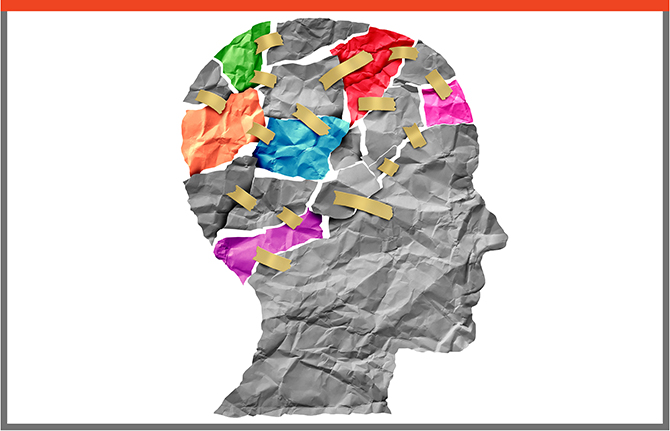
Connecting the Dopamine Dots
January 10, 2024
Helping Students to Thrive with Anxiety (instead of getting rid of it)
January 10, 2024Zoya Popivker, DO | Scott Falkowitz, DO | Vera Feuer, MD | Victor Fornari, MD
1. Why is youth mental health important for school principals?
Dr. Brock Chisolm, the first Director-General of the World Health Organization, stated it simply:
“Without mental health there can be no true physical health.”
Emotional health is an integral part of our well-being, which impacts our ability to focus and learn, and directly impacts our overall quality of life. When someone is struggling with mental health challenges, it can make it difficult to stay present and pay attention in school. It is also an important topic particularly for school principals because all youth are required to be educated in the United States, and youth spend much of their waking hours in school. It is an ideal place to educate students about mental health and emotions, detect mental health problems, support students having a challenging time, and connect those who need additional help to community resources. Schools can have a powerful impact on a student’s mental well-being.
2. Why now?
In 2021, Surgeon General Vivek Murthy announced a national mental health crisis among youth. The rates of depression and suicide were on the rise even before the pandemic, and they have exponentially increased since the isolation and compounded losses experienced in the past years. The percentages of children and adolescents struggling are significant, impacting all communities, and spanning all socioeconomic and religious backgrounds. We commend schools for making space for this topic and taking steps to support the mental health of their students.
3. How does mental health manifest in schools?
The experience of attending school is designed to support positive emotional development. Youth are provided with opportunities to become independent, acquire skills to navigate a larger community and understand and develop their identity. We also know that school can be associated with increased stress. While overcoming difficulties is an important part of growth, it can also precipitate mental health struggles in vulnerable youth. In addition, because our youth spend most of their time in the school environment, it is often the place in which their difficulties become most evident. That is why our schools provide such an important venue for identifying and supporting our youth who need more help.
4. What can schools do to support student mental health?
Schools should have a crisis plan to serve as a roadmap for when a mental health crisis arises. The plan can identify the trusted adult who can connect with the student struggling, understand the situation, and determine the next steps. Those next steps could mean providing a brief supportive intervention or, if needed, assessing the safety of the individual and deciding whether they are to be monitored closely at school, connect to a mental health professional as an out-patient, or be sent to an urgent care or emergency department. If a student is presenting themselves as a potential imminent risk to themselves or others, it is critical to refer them directly to an emergency department for evaluation and accompany them there.
We also want to reinforce the importance of preventive measures you can take as a school community. Evidence shows that school connectedness – a culture of belonging, and connection where students feel valued as individuals – is crucial in protecting student mental health. (cdc.gov/healthyschools/school_connectedness.htm) Additional ways to promote a positive school environment include developing and enforcing anti-bullying policies, having non-punitive discipline practices, (cdc.gov/healthyyouth/classroom-management/index.htm), and talking to students and families about mental health.
A specific recommendation would be to help students identify trusted adults within the school, whom they feel comfortable approaching when they are struggling. This person can be a counselor, a teacher, a coach, or another staff member. When a high-risk student who is struggling emotionally, socially, or behaviorally is identified, a regular daily check-in and check-out process with their trusted staff member is shown to be beneficial. (ncbi.nlm.nih.gov/pmc/articles/PMC3120067/)
5. When is the right time to intervene?
It can be difficult to know the right time to intervene, but there can be some telling signs that a student is struggling. If you notice that someone is in clear distress or is asking for help, it is certainly a suitable time to meet with the student to explore what is going on. Simply asking the question “How are you doing?” may be what the student needs to open up and share what has been difficult in their life.
If you are noticing significant changes in a student, such as a change in their appearance, engagement with others, or if there is an emerging pattern of tardiness/absences, this may be a good time to jump in and assess what is happening. Finally, if there are concerns that a student may be having thoughts of harming themselves or others, an immediate assessment should be completed, and that student should be directed to the appropriate level of care.
6. How can principals collaborate within the community to support their schools’ mental health?
It can be extremely helpful to establish relationships with organizations or individuals in the community that offer mental health assessment and treatment. At times, it can be difficult to identify what a child needs. A great partner in the community that all children have is their pediatrician. They can help assess a child and refer them to mental health resources. In New York State, for example, there is a phone line that pediatricians can use to receive guidance from child psychiatrists, including offering suggestions about professionals in the community to whom they can refer their patients.
Other community support includes religious leaders, coaches, and national organizations. Examples include the National Alliance on Mental Illness (NAMI), Children and Adults with Attention-Deficit/Hyperactivity Disorder (CHADD), the American Academy of Child and Adolescent Psychiatry (AACAP), and the American Academy of Pediatrics (AAP.)
7. How do we recognize symptoms of trauma within our schools?
Sadly, it is not easy for a child to grow up today. Traumatic events are quite prevalent. Although youth are resilient, repeated trauma and loss can make a child more vulnerable. Trauma can wear many faces, which can make it quite difficult to identify. For some, the shame and embarrassment of going through a traumatic experience can lead to withdrawal and avoidance of discussing their experience. For others, the impact of trauma can be more apparent, with students experiencing intrusive reminders and memories of the trauma. Either way, the downstream effects of trauma can be detrimental and can include the full spectrum of psychiatric symptoms, even including externalizing behaviors, such as acting out or becoming more oppositional, irritable, and even aggressive. Creating a calm, neutral space to allow your students to feel safe opening up about their trauma should be the primary goal, as this will set the stage for youth to seek the help that they may need.
8. How do we combat false beliefs (stigma) about mental health and seeking support?
Reducing stigma begins with changing the culture of mental health within our schools. We can do this by offering opportunities to support positive mental health and creating spaces in which our students can hear about, and potentially discuss their experiences with mental health. In addition to this, engaging with our local families about the importance of mental health and providing preventive interventions such as psychoeducation can help. Increasing the visibility of school mental health staff can go a long way in reducing resistance to seeking help. By asking the above questions and making simple interventions, you can quite effectively establish a culture in your school that encourages help-seeking and discourages discrimination and stigma against our youth and ourselves.
9. Is there any other advice you would give to school principals?
Do not forget about your own needs and the needs of your staff. As we always say to parents, “The oxygen mask goes on you first!” Such goes for school staff members too. The COVID pandemic has highlighted the irreplaceability of teachers. We need to support teachers, staff, and yes, even principals, to model and support resilience and mental health in their students.
10. Who are we?
Dr. Scott Falkowitz, Dr. Zoya Popivker, Dr. Vera Feuer, and Dr. Victor Fornari are child and adolescent psychiatrists at Northwell Health working with schools and pediatricians to help expand access to mental health care. We are passionate about helping schools identify mental health struggles in their students, utilizing educational and preventive support to help schools address the needs of their schools and connect families to treatment when needed.

